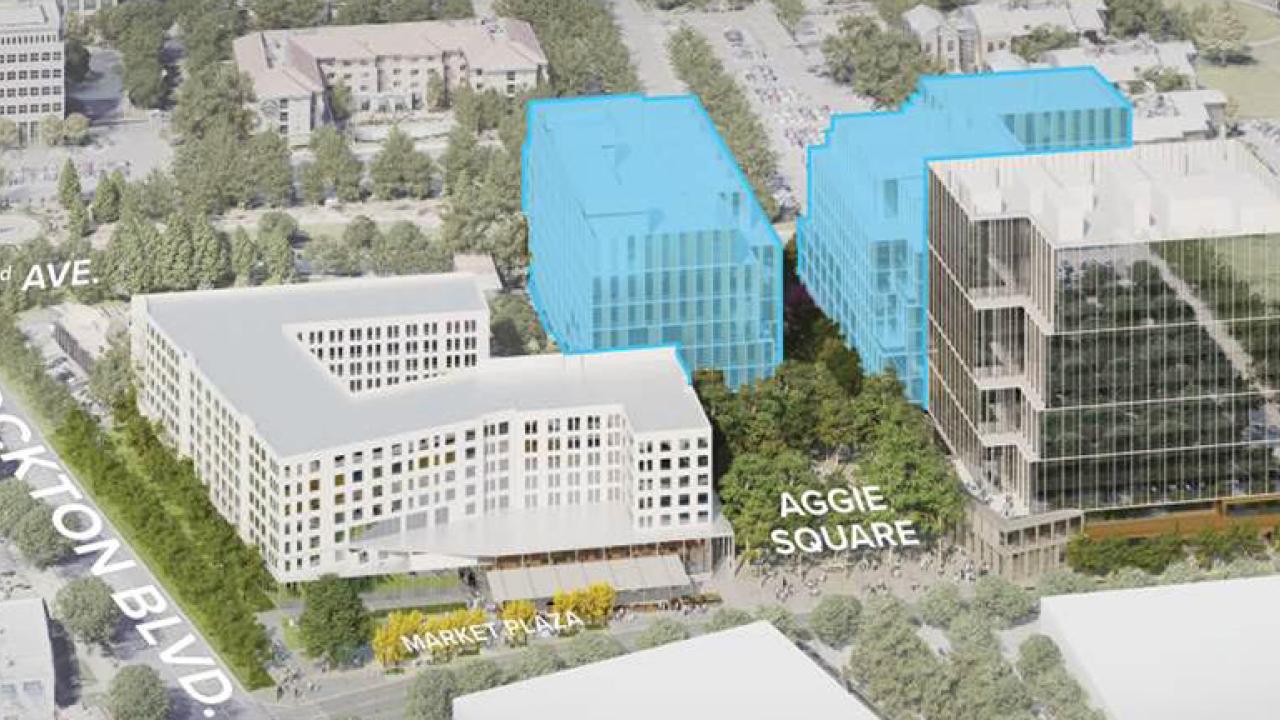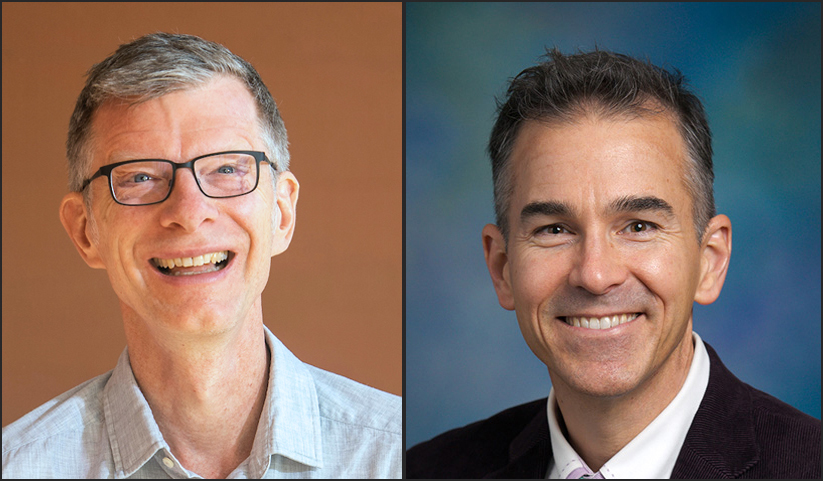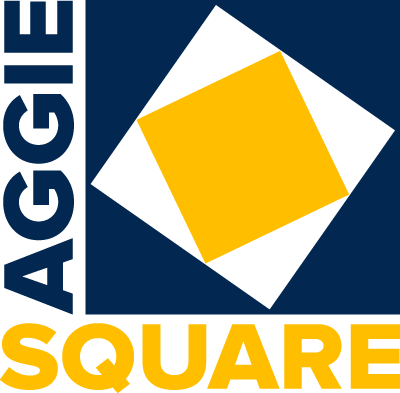
Two New Building Projects and the Future of Research
By John Marx and Paul Hastings
In 2021, faculty and staff are looking ahead, planning two new UC Davis building projects that will shape the future of research at our university. Aggie Square in Sacramento and the Grand Challenges Building in Davis will be devoted to bringing faculty and students together from multiple colleges, schools, and departments to generate new knowledge, to address the most complex challenges facing our world at this time, and to educate the next generation of researchers.
Integrating research across disciplines is neither fast nor easy — everything from our funding sources to our budgeting practices to our academic personnel review process can appear to conspire in making transdisciplinary research harder to do than it should be. We need to make it easier, and that’s been a key theme of our planning efforts.
Our recent COVID-19 research efforts have provided ample evidence that when the pressure is on, we can overcome the routine hurdles. All the things that slow us down in normal times — contests over resource allocation, establishing shared understanding of questions and procedures, complications of working across the Causeway, and the like — proved surmountable in the first weeks and months when research related to COVID ramped swiftly up and confirmed that we are good at working together, for the betterment of all.
This is why projects such as Aggie Square and the Grand Challenges Building hold such promise. Aggie Square will make the most of our university’s growing innovation infrastructure, promoting start-ups, linking our researchers with industry and community partners, and connecting to the clinical settings of the UC Davis Health campus. Teaching at Aggie Square will bridge theory and practice, enabling both undergraduate and graduate students to co-create and co-investigate with community and industry partners to solve real-world problems.

The Grand Challenges Building on the Davis campus will serve as a center for researchers seeking to blend their diverse expertise toward generating new approaches and solutions to the pressing issues that face our nation and world. Together, these facilities will catalyze our university community to further advance our research goals and international reputation in the 21st century.
As the faculty advisers in Provost Mary Croughan’s office charged with helping to make research at Aggie Square and the Grand Challenges Building as innovative as possible, we have been spending a good part of our time looking for successful models.
John Marx and Tom Osha (senior vice president, innovation and economic development for our development partner on Aggie Square, Wexford Science & Technology) have been interviewing faculty members about best practices in collaborating with industry. Jim Kovach (Aggie Square’s director for innovation and entrepreneurship) and John have been working with faculty to host focus groups that identify collaboration opportunities across broad research areas such as neuroscience and cancer.
Paul Hastings has been talking to center directors at grand challenges buildings around the world. The Charles Perkins Centre at the University of Sydney in particular has caught his eye. This center is a self-described engine of “unusual research” that greets such problems as diabetes, obesity and cardiovascular disease with the “complex-systems approach” they deserve. The Perkins Centre mission of bringing “together researchers in unexpected research collaborations” is one we’d like to import to our own Grand Challenges Building.
Paul also has hosted conversations among a diverse group of faculty and administrators charged with providing input on the vision for the Grand Challenges Building. This group’s discussions have centered on how best to set our goals for problem-solving that not only bridges disciplines but also involves stakeholders like politicians and community members. As well, this group has talked about how to better support the research culture described in the university’s strategic plan To Boldly Go: “Enable and support research that matters at the frontiers of knowledge, across and between the disciplines, in support of a healthy planet and the physical and societal well-being of its inhabitants.”
In Aggie Square and the Grand Challenges Building, we have the opportunity to take different (if complementary) approaches to advancing this goal. Working together, Paul and John are zeroing in on the unique attributes of these two projects and thinking about how they can best work in tandem.
What questions are we better able to answer at Aggie Square and which problems are we better equipped to solve in the Grand Challenges Building? How do we build complementarity, cohesion and collaboration into the research agendas that are pursued at both sites? How do we leverage these new facilities to create further opportunities that extend beyond their walls? These are big questions now and into the future.
Our COVID research brought out our best efforts and made us better communicators — both across our colleges and campuses and with stakeholders beyond the university. We have succeeded despite how exhausting it has been to work under the constant pressure of the pandemic emergency. Imagine what we can achieve if we maintain and expand such unified efforts when this crisis is over.
Transdisciplinary research involves thinking and working differently than how many faculty like us were trained, but it shouldn’t be impeded by old habits or arbitrary boundaries. It should and can be easier to get started and to sustain. It should and can be a larger part of our business as usual.
To get there, we need the structural support to make that ambition a reality — both buildings within which we can pursue the critical work, and administrative support for doing so. That is the goal of these two projects and the catalyzing force they will provide for the future of research at UC Davis.
